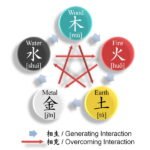Introduction to the Unification of the Korean Peninsula
The unification of the Korean Peninsula, particularly during the period of the Silla dynasty, represents a pivotal moment in the history of Korea. In the early historical context, the Korean Peninsula was divided among three kingdoms: Silla, Baekje, and Goguryeo. Struggles for dominance among these kingdoms created a landscape rife with conflict, but it also laid the groundwork for a unified identity that would shape Korean culture and society.
Motivations for unification were multifaceted, encompassing political, economic, and cultural considerations. The Silla kingdom, in particular, aimed to consolidate power and establish stability in a fragmented region. The strategic alliances formed with neighboring states, notably with the Tang dynasty in China, played a crucial role in Silla’s military campaigns against Baekje and Goguryeo. This foreign connection not only bolstered Silla’s military capacity but also facilitated the transfer of advanced cultural practices from the Tang dynasty, promoting significant developments in art, philosophy, and technology.
Key figures in the process of unification included prominent rulers such as King Jinheung and King Munseong, who spearheaded efforts to bring the peninsula under a single governed structure. Their leadership not only focused on military conquests but also emphasized diplomacy and cultural integration. As Silla expanded its influence, the impact on Korean history was profound. The formation of a unified state allowed for enhanced cultural exchanges, which in turn fostered a rich tapestry of religion, art, and governance that transcended previous limitations of the individual kingdoms.
The unification of the Korean Peninsula under Silla set a precedent for subsequent dynasties, most notably the arrival of Goryeo. This led to further explorations of what it means to be Korean, solidifying a national identity that resonates through centuries of history. The ramifications of this unification process continue to be felt in contemporary discussions surrounding Korean cultural heritage and national unity.
Historical Background of Silla
The Kingdom of Silla, one of the three kingdoms of Korea, was established in 57 BCE and emerged as a prominent power that played a significant role in the history of the Korean Peninsula. The kingdom’s formation was attributed to a combination of various tribal states that consolidated under the leadership of the Kim clan, marking the beginning of Silla’s rich cultural and political development. Throughout its lengthy history, Silla made considerable advancements, especially during the 6th to 8th centuries, a period often referred to as the golden age of Silla.
Silla’s early achievements were remarkable, particularly in the domains of culture, religion, and foreign relations. The kingdom was renowned for its artisanship and sophisticated metalwork, creating intricate gold crowns and jewelry that exemplified its advanced craftsmanship. In this era, Buddhism emerged as the dominant religion, significantly influencing Silla’s cultural landscape and fostering artistic innovation. The construction of monumental temples, such as the famous Hwangnyongsa, reflected Silla’s commitment to spiritual and architectural grandeur.
Socio-politically, Silla operated under a centralized monarchy, with a series of key figures leading the kingdom. Among them was Queen Seondeok, who ruled from 632 to 647 CE, and is celebrated for her progressive policies and contributions to the arts and sciences. Another notable leader, King Jinheung, expanded the kingdom’s territory while establishing strong military and diplomatic ties with neighboring states, which laid the groundwork for greater unification efforts. The establishment of the “Golden Age” in Silla allowed it to become a driving force in the dynamics of Korean power struggles, ultimately shaping the continent’s future. These historical developments, along with significant dates and events, provide essential context for understanding the complex tapestry of Silla’s unified mission and the subsequent rise of Goryeo.
The Golden Culture of United Silla
The period of United Silla, from the late 7th century to the late 9th century, marked a significant milestone in the history of the Korean Peninsula. This era is often recognized as a golden age, characterized by remarkable advancements in various aspects of culture, including art, architecture, religion, and philosophy. The unification under Silla fostered an environment that allowed these cultural elements to flourish, contributing to a rich legacy that still resonates today.
Art during the United Silla period showcased refined techniques and aesthetic sensibilities, markedly evident in the production of exquisite pottery and intricate gold pieces. Artisans crafted delicate jewelry and ceremonial wares, often adorned with elaborate designs reflecting the influence of Buddhism, which was thriving at the time. The introduction of bronzework and goldsmithing art resulted in a wealth of artifacts that provide insight into the skills and artistry of the period.
Architecturally, the period saw the construction of impressive stone temples and monumental structures, exemplifying the sophisticated engineering skills of the Silla people. The famous temple of Hwangnyongsa, with its elaborate pagodas and halls, was emblematic of this architectural prowess. Furthermore, Buddhist sculptures, such as the unique Seokguram Grotto, displayed an impressive blend of spirituality and artistry, reflecting the significance of religious practices in society.
Religiously, the unification brought about a deeper integration of Buddhism into everyday life. Silla fostered an environment where monks could educate the public, leading to the proliferation of philosophy that examined moral and spiritual questions. This intellectual advancement was crucial in shaping a society that valued ethics alongside religious beliefs, contributing to a cohesive cultural identity.
The cultural legacy of the United Silla serves as a testament to the achievements of a society that embraced artistry, spirituality, and philosophy, setting the stage for the subsequent development of the Korean Peninsula. Its golden culture continues to influence contemporary Korean identity and heritage.
Military Conquests and Unification Strategies
The unification of the Korean Peninsula under the Silla dynasty marked a significant transformation in the region’s historical landscape, primarily driven by military conquests and strategic alliances. The process began in the late 7th century, during a time when the peninsula was fragmented into three rival kingdoms: Silla, Baekje, and Goguryeo. Silla emerged as a formidable power, adopting a combination of military prowess, strategic diplomacy, and effective leadership to establish its dominance.
A pivotal element in Silla’s military strategy was the formation of the alliance with the Tang dynasty of China, which proved vital in their campaigns against Goguryeo and Baekje. This alliance was marked by a significant military expedition in 660, where joint Silla-Tang forces successfully invaded and conquered Baekje. This battle demonstrated not only Silla’s military capabilities but also the importance of collaboration with external powers. The fall of Baekje weakened the political landscape, allowing Silla to focus on its next target, Goguryeo.
The decisive battle of 668 at the fortress of Ansi showcased Silla’s strategic acumen. Despite facing a strong enemy, Silla employed guerrilla tactics, leveraging the terrain to disrupt Goguryeo’s supply lines and create confusion among enemy ranks. The successful siege of Ansi enabled Silla forces to gain significant ground, leading to the eventual collapse of Goguryeo. Following these conquests, Silla implemented policies aimed at assimilating the conquered territories, promoting cultural integration while maintaining military oversight.
Silla’s unification strategies extended beyond mere conquest; they included establishing administrative frameworks and fostering economic cooperation among the regions. By integrating military and civilian governance, Silla ensured lasting control over the united territories, laying the groundwork for a new cultural era in Korean history. The conquests set during this period ultimately facilitated the emergence of a sophisticated golden culture that defined the historical narrative of the Korean Peninsula.
The Role of Buddhism in Unifying the Kingdom
Buddhism played a pivotal role in the unification of the Silla kingdom, serving as a significant cultural and spiritual force that fostered cohesion among diverse communities. Introduced to the region during the early centuries CE, Buddhism gradually permeated the social fabric of Silla, influencing various aspects of daily life. The faith’s core principles, emphasizing compassion, morality, and the search for enlightenment, resonated with the people, creating a shared ethos that transcended local customs and practices.
The presence of prominent monks and figures within the Buddhist community further solidified this spiritual unification. Monasteries became centers of learning and culture, offering a space for scholarly pursuits and communal gatherings. Influential monks, such as Wonhyo and Uisang, played crucial roles in interpreting Buddhist doctrine and integrating its teachings into the Silla way of life. Their efforts not only enriched Buddhist philosophy but also facilitated the exchange of ideas across different regions, thereby enhancing inter-regional peace and cooperation.
Furthermore, the adaptation of Buddhist practices into local customs contributed to a collective identity among the populace. Festivals, rituals, and art forms inspired by Buddhism became integral to Silla culture, leading to a unique synthesis of religious and secular traditions. The architectural marvels of Buddhist temples and stupas scattered across the kingdom epitomized this cultural fusion, serving not only as places of worship but also as symbols of unity and shared heritage.
As Buddhism flourished, it encouraged interactions with neighboring kingdoms, fostering diplomatic relationships that were essential for political stability. The spread of Buddhist ideals emphasized non-violence and mutual understanding, paving the way for greater harmony among diverse ethnic groups. Through its profound influence on personal, cultural, and political spheres, Buddhism emerged as a foundational force in the unification of Silla, ultimately shaping the trajectory of the Korean Peninsula’s historical narrative.
The Transition from Silla to the New Three Kingdoms
The transition from the unified Silla period to the establishment of the New Three Kingdoms represents a significant shift in the historical landscape of the Korean Peninsula. Following the unification under Silla, the region witnessed profound political, cultural, and economic transformations that laid the groundwork for what would become an essential chapter in Korean history.
Simultaneously, the cultural evolution during this period contributed significantly to the burgeoning Golden Culture of United Silla. Art, literature, and philosophical thought flourished as tributaries of influence from neighboring cultures began to merge with indigenous practices. The introduction of Buddhism, for instance, further elevated cultural exchanges, fostering a distinctive blend of religious art and architecture that would dramatically influence Korean identity.
Economically, trade routes established during the Silla period expanded, connecting the peninsula to China and beyond. This flourishing commerce facilitated the flow of goods, ideas, and innovation, stimulating economic growth and cultural dissemination. However, this prosperity was not without its challenges; issues such as taxation, resource allocation, and economic disparity led to social unrest.
In summary, the transition from Silla to the New Three Kingdoms encapsulated a period marked by both opportunity and adversity. As the region adapted to new political structures and embraced a rich cultural heritage, the stage was set for the emergence of a new historical identity, heralding the dawn of Goryeo. This intricate interplay of change continues to resonate through the annals of Korean history.
Rise of Goryeo: From Silla’s Legacy to New Beginnings
The rise of the Goryeo dynasty marked a significant transition in Korean history, serving as a bridge between the impressive cultural achievements of united Silla and the innovations of future dynasties. Founded in 918 by Wang Geon, Goryeo emerged in the midst of political upheaval and fragmentation following the decline of Silla. The new dynasty sought to reconstruct the societal framework while incorporating the foundations laid by its predecessor. This included the integration of the established bureaucratic system and the promotion of Confucian ideals, both of which had been central to Silla’s governance.
One of the most defining aspects of Goryeo’s emergence was its ability to cultivate a distinct identity that honored Silla’s cultural legacy while fostering new developments. While Silla had been renowned for its sophisticated artisanship and Buddhist influence, Goryeo expanded the cultural landscape by incorporating Confucian values more prominently. The incorporation of Confucian scholarship not only helped consolidate political power but also marked the beginning of a new cultural era where academic accomplishments were greatly emphasized.
Despite the ambition that characterized Goryeo’s early years, the newfound dynasty faced numerous challenges, including internal strife and external threats. Firstly, the fragmentation of Korea into various rival counterstates meant that Goryeo had to engage in consecutive military campaigns to assert its authority. The conflict with the Khitan Liao dynasty was particularly significant; the Liao’s incursions tested Goryeo’s resilient stance as a nascent power. Nevertheless, through strategic alliances and military reforms, Goryeo established itself as a formidable entity throughout the region.
Ultimately, the rise of Goryeo was characterized by a strategic blend of Silla’s rich heritage and the innovative zeal of its new leadership. By navigating the complexities of governance, cultural preservation, and military defense, Goryeo laid the groundwork for its role as a defining power in Korean history. The subsequent cultural synthesis championed by Goryeo would later pave the way for future advancements in Korean civilization.
Cultural Exchanges and Global Influences
The period of unification on the Korean Peninsula marked a transformative era characterized by significant cultural exchanges and interactions. As the kingdoms of Silla and Goryeo emerged, these states actively engaged in trade and diplomatic relations with neighboring realms, profoundly influencing their cultural identities. Through such exchanges, a rich tapestry of traditions developed, shaping the sociocultural landscape of Korea.
Trade routes established during the unification era facilitated not only the exchange of goods but also the flow of ideas and cultural practices. Silla’s strategic coastal position allowed for maritime trade with significant partners, including China and Japan. Silk, pottery, and agricultural products traveled alongside philosophical concepts, particularly Buddhism, which flourished during this time. The integration of these foreign influences played a pivotal role in the development of a distinctive Korean identity while borrowing elements from neighboring cultures.
Similarly, during the Goryeo dynasty, interactions with powerful regional states helped to mold Korean culture further. Goryeo’s position as a hub for Buddhism and Confucianism attracted scholars and artists from diverse regions, resulting in a synthesis of local and foreign artistic styles. This period saw the emergence of specific crafts, such as celadon pottery, which exemplified this cultural fusion by combining traditional Korean techniques with foreign inspirations. Additionally, the diplomatic missions to China served as a conduit for further cultural enrichment, fostering a shared understanding of governance, literature, and philosophy.
The influence of Mongol and Central Asian cultures during Goryeo’s relations with the Mongol Empire further illustrates the complex interplay of ideas during this era. Elements of Mongolian culture, including fashion and military strategies, indigenous practices integrated into Korean society, demonstrating the fluid nature of cultural identity. Overall, these interactions not only enriched Korean traditions but also secured their place on the broader stage of regional history during the unification and Goryeo epochs.
Conclusion: Reflections on the Significance of Unification
The unification of the Korean Peninsula marks a pivotal chapter in the historical narrative of the region, particularly with respect to the rich cultural legacies of the Silla and Goryeo dynasties. Throughout history, these two kingdoms not only established robust political structures but also nurtured a sophisticated cultural identity that continues to resonate in contemporary Korean society. The legacies of Silla and Goryeo serve as essential building blocks for understanding the intricate dynamics of Korean culture and national identity.
Silla, known for its advancements in arts and science, laid the groundwork for a unified cultural heritage, emphasizing Buddhism and the arts, which are integral to the Korean identity today. Meanwhile, Goryeo’s profound influence manifests through the development of the Korean script, ceramics, and the establishment of a centralized system of governance that further solidified cultural unity. The synthesis of these two dynasties facilitated a transition towards a singular national identity, echoing through the ages.
The historical significance of unification extends beyond the political realm; it encapsulates the philosophical and ethical frameworks that have shaped modern Korea. It fosters a sense of shared history and collective pride among the Korean people, reinforcing their unique cultural identity on the global stage. As Korea continues to navigate contemporary challenges, the lessons from the unification process serve as a reminder of the potential for collaborative unity amid diversity.
In conclusion, the unification of the Korean Peninsula is not merely a historical event but a foundational aspect of Korean identity. The sophisticated Golden Culture of United Silla and the dawn of Goryeo provide insight into the resilience and adaptability of the Korean people. This legacy not only symbolizes their rich past but also challenges current generations to reflect upon and embrace their cultural heritage as a source of strength and inspiration for the future.















